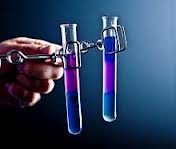 In-vitro fertilization (IVF) is one method couples experiencing infertility use to try to have a baby. But a single IVF cycle is expensive and only has about a 32% success rate. So, doctors often implant multiple embryos to increase the odds of conception, also unwittingly increasing the chance of a multiple birth. Multiple birth pregnancies are high-risk and can have serious complications for both mothers and babies.
In-vitro fertilization (IVF) is one method couples experiencing infertility use to try to have a baby. But a single IVF cycle is expensive and only has about a 32% success rate. So, doctors often implant multiple embryos to increase the odds of conception, also unwittingly increasing the chance of a multiple birth. Multiple birth pregnancies are high-risk and can have serious complications for both mothers and babies.
Two new techniques may improve the chance of conception from implanting a single embryo.
The first technique is pre-implantation genetic screening. In this procedure, cells are removed from the embryo on day five to see if the normal amount of genetic material is present. Embryos with extra or missing chromosomes are considered less viable because studies have shown they can cause miscarriage. This process is different from genetic screening for specific diseases or disorders, called pre-implantation genetic diagnosis.
The second technique is time-lapse imaging, a less invasive method of evaluating embryos. With time-lapse imaging, thousands of pictures are taken to record a fertilized egg cell dividing. Eggs dividing atypically are unlikely to survive. “The embryo’s fate can be determined very early in development,” says Barry Behr, director of Stanford University Medical Center’s IVF laboratory.
Dr. Behr co-wrote a study identifying three markers that determine if a four-cell embryo (on day two) is likely to reach blastocyst, a critical stage where it has divided into about 120 cells (on day five) and has a better chance of implanting in the uterus.
Time-lapse imaging may also work in tandem with chromosomal screening, since it provides information about an embryo’s metabolisms unavailable through genetic testing. Both of these techniques are expensive and more research is needed.
Adapted from the Wall Street Journal, September 14, 2014
